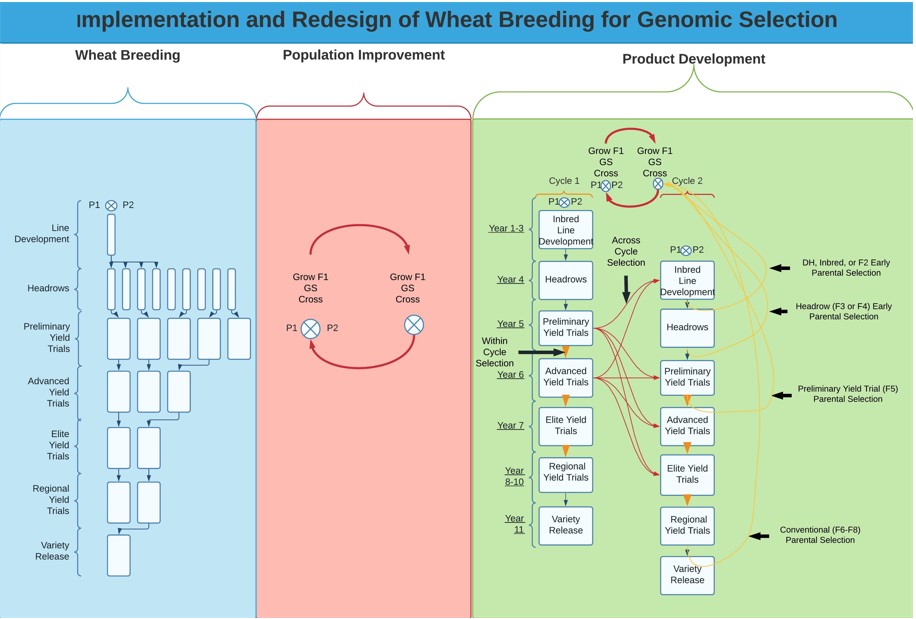Wheat (Triticum aestivum L.) breeding programs can take over a decade to release a new variety. However, new methods of selection such as genomic selection (GS) must be integrated to decrease the time it takes to release new varieties to meet the demand of a growing population. The implementation of GS into breeding programs is still being explored, with many studies showing its potential to change wheat breeding through achieving higher genetic gain. In this review, we explore the integration of GS for a wheat breeding program by redesigning the traditional breeding pipeline to implement GS. We propose implementing a two-part breeding strategy by differentiating between population improvement and product development. The implementation of GS in the product development pipeline can be integrated into most stages and can predict within and across breeding cycles. Additionally, we explore optimizing the population improvement strategy through GS recurrent selection schemes to reduce crossing cycle time and significantly increase genetic gain. The recurrent selection schemes can be optimized for parental selection, maintenance of genetic variation, and optimal cross-prediction. Overall, we outline the ability to increase the genetic gain of a breeding program by implementing GS and a two-part breeding strategy.

